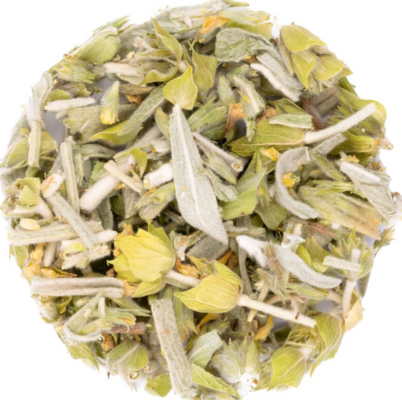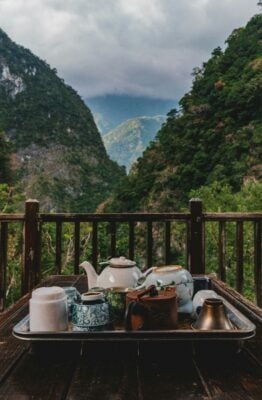Dongfang Meiren (“Oriental” or “Eastern Beauty”), Bail Hao Oolong (“White Tip Oolong”) or Pengfeng Cha (“Braggart’s tea”) these are all names referring to a prestigious high quality Oolong tea hailing from Taiwan. But what exactly is Eastern Beauty, and why is it held in such high regard?
The story goes that in the 1930s a farmer in Beipu, a rural township in Hsinchu County Taiwan, once discovered that his spring crop of tea leaves were infested with small green insects. Instead of counting his losses the farmer decided to oxidize the leaves anyway and made a batch of tea he took to the market. A foreign merchant was so impressed with the taste of this tea that he was willing to pay double the usual price just to get his hands on it. When the farmer gleefully returned to his village and bragged about how well he did, all the people in the village recognized he was boasting so they named his tea Peng Feng Cha, or Braggart’s tea.

While the veracity of the origins of Eastern Beauty is difficult to verify, it does tell the story of how the tea gets its particular flavor. The plants out of which this tea is made are grown without the use of pesticides in an effort to attract the tea jassid (Jacobiasca formosana), a bug that feeds on these plants. It is this process which in turn gives the tea its unique flavor; one of the plant’s defense mechanisms is that it produces a natural, honey-like sweetness to attract natural predators of these bugs in order to protect itself. During this process the tips of the tea buds turn white, hence the second name “White Tip Oolong”.
So why was, and is, this tea held in such high regard? Like with all teas, there exists a large range of different quality grades, and while some grades definitely taste better than others, this is not the main reason why Eastern Beauty tea seemed to be worth twice as much as other teas. Because of its high price the tea has held a certain reputation, but this high price is easy to explain. Insects like the tea jassid also at times damage crops to such an extent that a harvest yields significantly less than crops grown with pesticides. Even more so, heavy rains before harvest can offset the sweet flavor created by the bugs. With a limited supply it is only natural that the price goes up.
The success of Eastern Beauty incidentally inspired other tea manufacturers to copy its production methods to no longer use pesticides, thereby creating different variations of “bug-bitten” teas. As the tea production in Taiwan continued to develop in the 70s and 80s, it is believed that the name “Oriental Beauty” was given to the tea as a strategy to market it to the West. Since the word “oriental” has fallen out of fashion in today’s day it is now more often referred to as Eastern Beauty.



